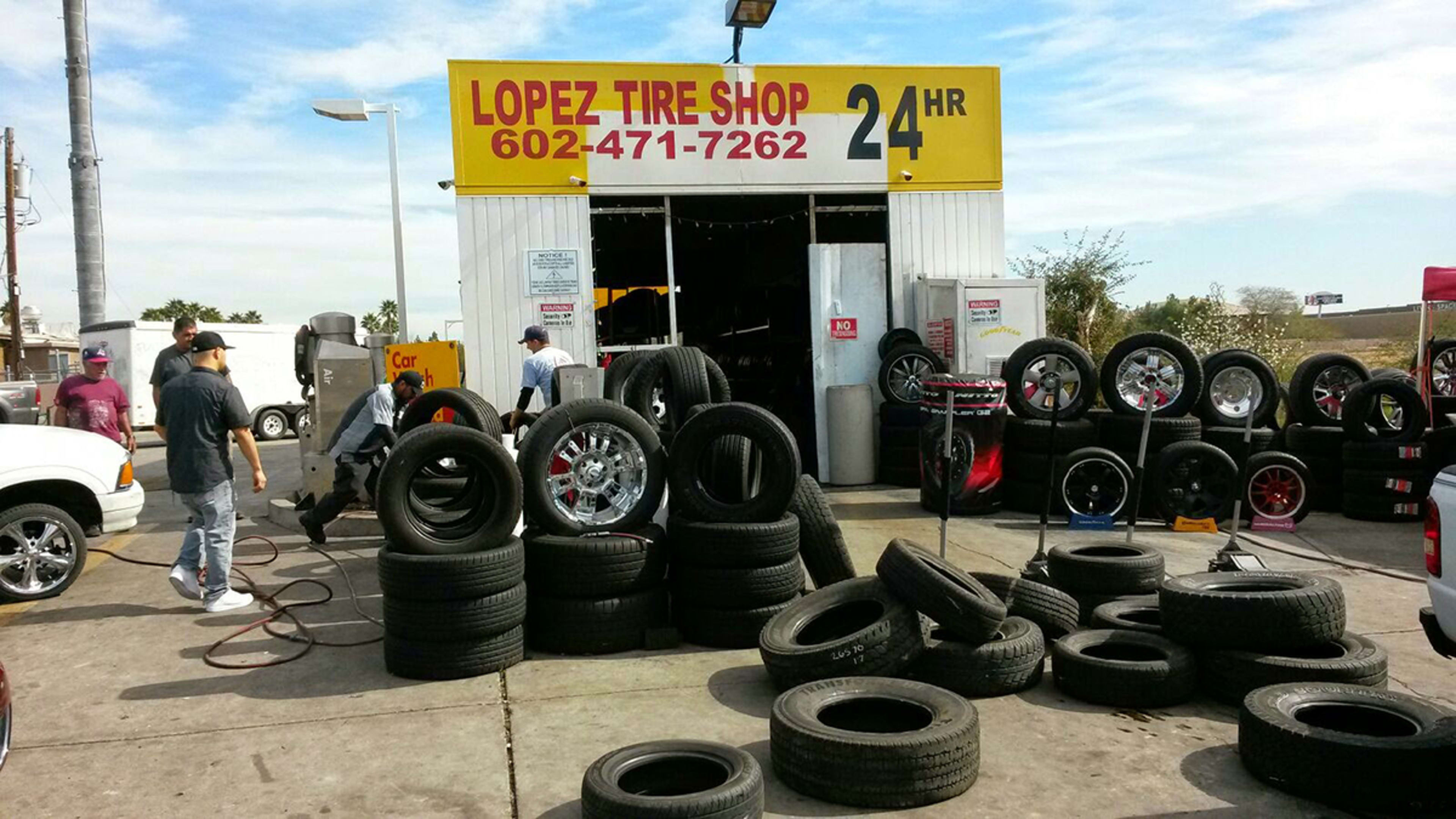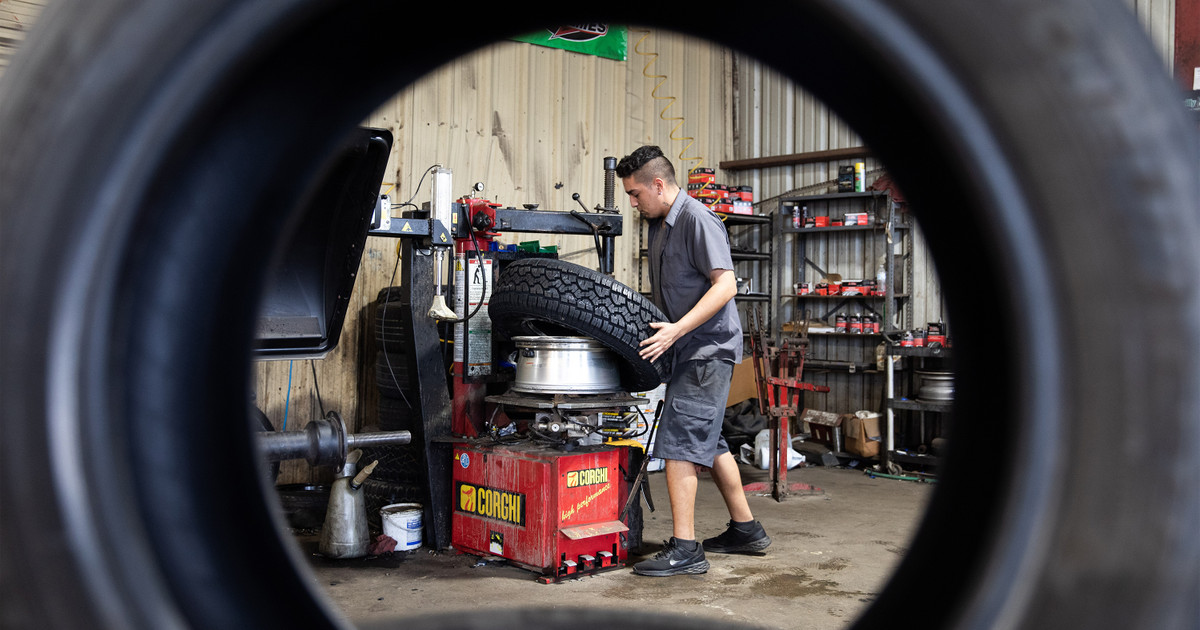Discover Ease at Tire Tracks Morris IL: Premier Tire Shop Near Me
Discover Ease at Tire Tracks Morris IL: Premier Tire Shop Near Me
Blog Article
The Scientific Research Behind Tire Repair Work and Security
When it concerns the detailed globe of tire upkeep and safety, there exists a realm of science that frequently remains undetected by the average motorist - morris tire service. The products that make up a tire, the influence of tire stress on overall security, the implications of tread wear, the intricate dynamics of tire traction, and the often-overlooked relevance of proper wheel placement all play important duties in making certain a car operates safely and successfully. As we navigate via the complexities of tire repair and safety and security, it becomes obvious that a deeper understanding of these scientific principles is not just advantageous but crucial for every single motorist on the roadway
Tire Structure and Capability
What materials make up the structure of tires, and exactly how do these parts add to their functionality when driving? Tires are complicated products, normally made from a combination of rubber compounds, fabric, steel cords, and other chemical additives. One of the most typical kind of rubber utilized in tires is artificial rubber, which uses longevity and resistance to deterioration. The textile layers, typically made from rayon, nylon, or polyester, provide strength and security to the tire framework. Steel cables are integrated to enhance the tire's toughness and help it preserve its form under various road problems.
The rubber compounds use hold and grip, enabling the tire to adhere to the roadway surface and offer security during velocity, braking, and cornering. On the whole, the cautious selection and combination of these products ensure that tires can perform properly and securely on various road surface areas and problems.
Effect of Tire Stress on Security
Preserving appropriate tire pressure is essential for ensuring optimum safety and efficiency while driving. The influence of tire pressure on safety and security can not be overstated. Underinflated tires are vulnerable to overheating, which can result in tire blowouts, specifically at broadband. Furthermore, reduced tire stress influences the handling and responsiveness of the car, enhancing the risk of mishaps, specifically throughout emergency situation maneuvers. On the other hand, overinflated tires have less call with the road surface, reducing grip and triggering unequal wear on the tire footsteps. This jeopardizes the vehicle's stability and braking performance, posing a substantial security threat. Effectively inflated tires additionally play a critical duty in fuel efficiency, as underinflated tires can boost rolling resistance, bring about decreased gas mileage. Frequently checking and keeping the right tire stress not just ensures safety but also prolongs the life-span of the tires, saving money on substitute expenses over time.
Tread Use and Its Implications
Proper tracking of tire step wear is vital for ensuring ideal efficiency and safety when traveling. As tires wear down, the deepness of the tread reduces, minimizing the tire's capability to maintain traction, particularly in slippery or damp problems. The step pattern and depth play an important role in funneling dig this water away from the tire to avoid hydroplaning and keeping grasp when driving surface.
Signs of too much walk wear consist of hairless areas, irregular wear, and the look of wear indicators. Hairless spots indicate localized wear, which can lead to instability and enhanced threat of blowouts. Uneven wear might recommend problems with tire alignment, suspension, or inflation elements. Use indicators are developed into the tire step and come to be visible when the step depth reaches a specific low point, indicating the requirement for prompt replacement.

Recognizing Tire Traction Characteristics
Checking tire tread wear not only makes certain ideal efficiency and security however likewise directly impacts the traction characteristics of the tires on different roadway surfaces. Tire traction is an important aspect of vehicle handling and safety, as it establishes the hold between the tires and the road. Traction dynamics vary relying on roadway conditions such as completely dry sidewalk, wet roadways, snow, or ice.

Recognizing tire traction dynamics is important for motorists to adjust their driving behavior according to the roadway conditions. morris tire service. On a regular basis examining tire walk depth and problem can substantially enhance traction performance, making certain much safer driving experiences across different surfaces
Significance of Correct Wheel Positioning
Making sure proper wheel alignment plays an essential function in enhancing lorry efficiency and expanding tire durability. Appropriate wheel placement entails readjusting the angles of the wheels to maker specifications, making sure that they are vertical to the ground and alongside each other. When positioning is off, it can bring about unequal tire wear, lowered fuel performance, and jeopardized handling.
Among the essential advantages of preserving appropriate wheel alignment is enhanced dealing with and security. Misaligned wheels can cause the lorry to draw away, affecting guiding control article source and overall driving experience. Furthermore, appropriate positioning promotes even tire wear, protecting against early tire replacement and minimizing upkeep expenses in the long run.

Conclusion
In final thought, the scientific research behind tire repair work and safety and security is crucial for preserving automobile performance and ensuring motorist safety and security. By comprehending tire make-up, pressure, step wear, grip dynamics, and wheel alignment, vehicle drivers can avoid crashes and extend the lifespan of their tires.
The products that compose a tire, the influence of tire pressure on total security, the implications of walk wear, the intricate dynamics of tire traction, and the often-overlooked value of appropriate wheel alignment all play vital functions in making certain a car operates securely and successfully. On the other hand, overinflated tires have much less call with the road surface, lowering traction and triggering irregular wear on the tire treads. Routinely inspecting and maintaining the appropriate tire pressure not only guarantees safety and security however additionally extends the life-span of the tires, saving on replacement expenses in the long run.
Keeping track of tire walk wear not just guarantees ideal efficiency and safety and security but likewise directly affects the traction dynamics of the tires on various roadway surfaces. Tire traction is a critical element of car handling and safety, as it determines the grasp between the tires and the road.
Report this page